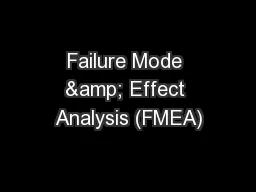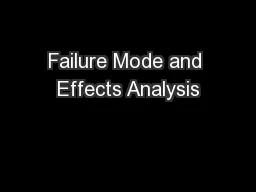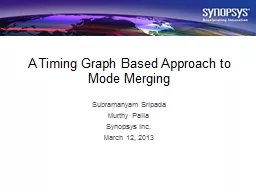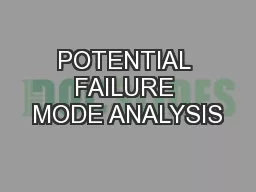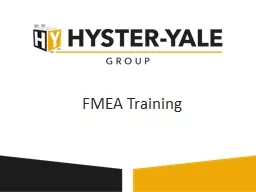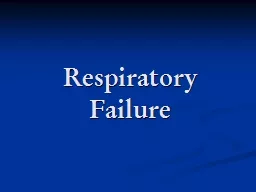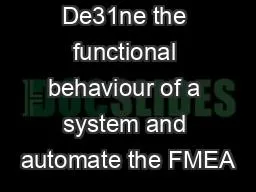PPT-Failure Mode & Effect Analysis (FMEA)
Author : tatiana-dople | Published Date : 2017-10-04
in Half the Time Howard C Cooper MS DFSSBB May 13 th 2014 INCOSE Michigan May Dinner Meeting Introduction Failure Mode amp Effects Analysis FMEA is an analytical
Presentation Embed Code
Download Presentation
Download Presentation The PPT/PDF document "Failure Mode & Effect Analysis (FMEA..." is the property of its rightful owner. Permission is granted to download and print the materials on this website for personal, non-commercial use only, and to display it on your personal computer provided you do not modify the materials and that you retain all copyright notices contained in the materials. By downloading content from our website, you accept the terms of this agreement.
Failure Mode & Effect Analysis (FMEA): Transcript
Download Rules Of Document
"Failure Mode & Effect Analysis (FMEA)"The content belongs to its owner. You may download and print it for personal use, without modification, and keep all copyright notices. By downloading, you agree to these terms.
Related Documents

